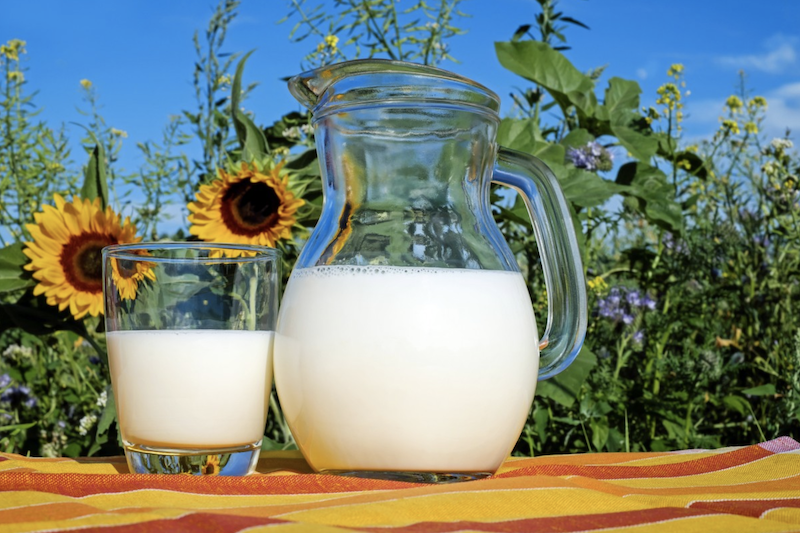The great Milk Diet experiment results are in
posted on
November 1, 2019

Being in the dairy business, we hear a lot of rumors about milk on the farm.
One particular rumor really got us curious: You can live on only milk.
So, is this true? We had to look into it more.
We found that some people go on periodic milk only diets to lose weight. We also found that many toddlers go on food strikes, refusing food but gulping down milk. We found a bodybuilder who attempted this to gain weight with no success. We also heard a very strange story about a man who damaged his digestive system as a toddler and drank raw milk only his whole life and was very healthy.
There wasn’t much definitive info out there. So, the only “logical” thing to do was to try it ourselves.
Three of the ladies who work on the farm and myself did a milk diet experiment. We consumed milk only for 7-10 days.
It’s important to note that we are all in good health and eat wholesome omnivorous diets that include dairy and fermented foods. None of us take any medications, just some natural supplements like cod liver oil and elderberry syrup.
We all had similar experiences. Here’s how it went.
On the first day, it felt weird, like we should be eating. Food is so very psychological.
I personally struggled a lot in the middle of the first day. I was tired and started to get a headache. This was strictly due to not having caffeine. I caved and drank a cup of coffee, which I thought was acceptable. So for me it ended up being a milk and coffee diet. Food is psychological, but caffeine dependency is very physically real.
On the second and third day, the smells of food really got to me. I so wanted to eat the salty buttery popcorn my kids were eating. I so wanted to take a bite of braised short ribs, smoked cheddar cheese, and fermented pickles.
All of us reported the biggest struggle of the milk diet being restraining from eating what others were. It felt unsociable, and solid food is yummy.
By day 3, it was simply normal. There was no hunger, no thirst, the same level (or slightly more) energy. It was the same all the way through.
Hmmm. This really gets me thinking. Does milk actually have everything you need to survive?
In case you’re wondering, a gallon of conventional whole milk is about 2,400 calories. Conventional whole milk is 88% water and has 7.7 grams of protein, 11.7 grams of carbs, 12.3 grams of sugar, 0 grams of fiber, and 8 grams of fat. It’s also a good source of Vitamin B12, calcium, riboflavin, phosphorous, and other vitamins and minerals.
And, I assume that, if you’re sourcing from a small farmer that’s monitoring soil quality and producing 100% grass fed milk, many of those numbers will be boosted.
During the milk diet experiment, each of us drank between ½-1 gallon of milk per day.
Over the course of 10 days, everyone, including myself, reported losing weight. Nothing significant, anywhere from 1-8 lbs.
For me, I think it was due to the lack of empty calories. My body was using everything it took in.
Also, when you take the psychology out of eating, you eat what you need, nothing more and nothing less.
So, what did we learn?
We learned that milk satisfies hunger completely. We learned that we consume more food than we need to. The ladies on the farm all reported the biggest success was practicing self discipline.
My biggest takeaway from the milk only experiment is that milk is a great and wholesome snack.
My kids seem to always be hungry. Ten minutes after a meal, they want a snack. So now, I offer them a glass of milk! It’s filling. It’s nutritious. And, it will certainly tide you over before the next meal.
Would I do the milk diet again? Probably not. But, I am glad I did it once. The ladies on the farm all gave an emphatic yes to doing the milk diet again, especially if they’re dealing with a chronic disease or are struggling with gut/digestive issues.
What do you think? Would you do the milk diet?




